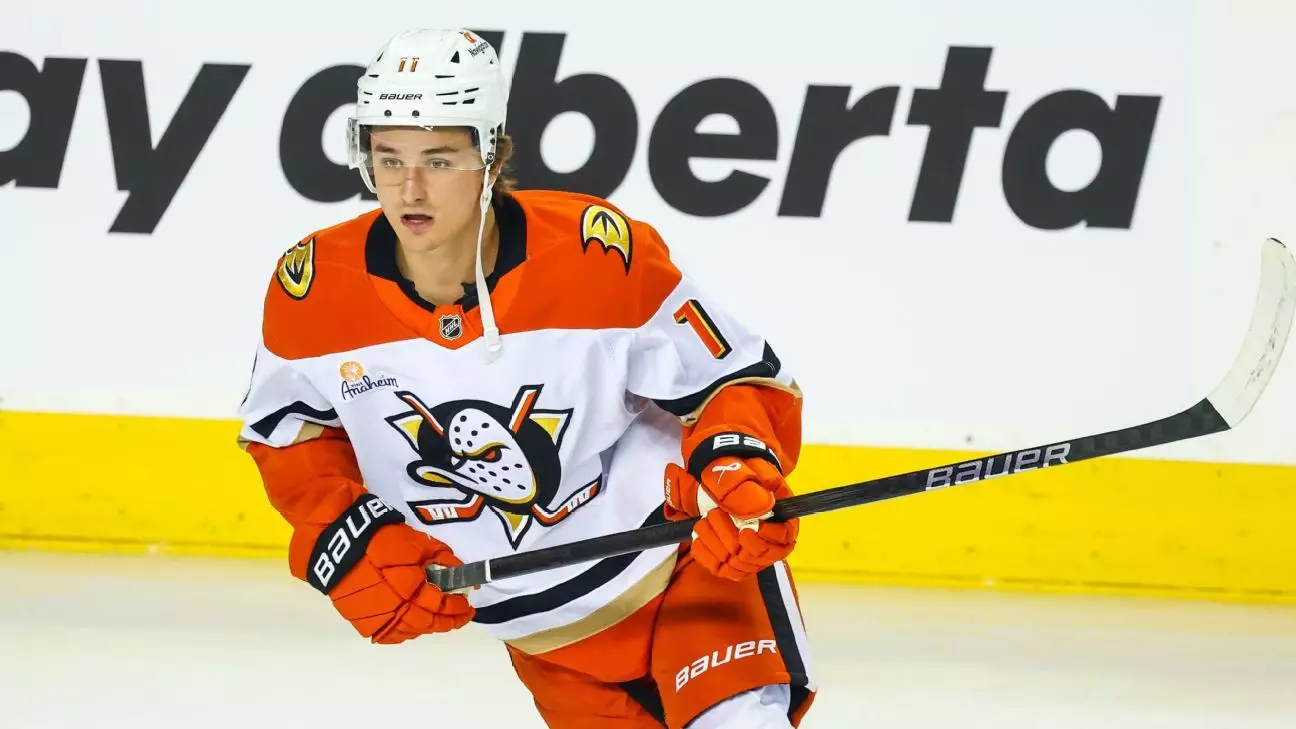On a momentous Monday, whispers morphed into action as the Anaheim Ducks traded Trevor Zegras to the Philadelphia Flyers. This move, long anticipated by hockey pundits and fans alike, ignites a flurry of discussions about the implications for both franchises. The Ducks received forward Ryan Poehling along with a second-round pick in 2025 and a fourth-round pick in 2026, further enriching the narrative behind potential versus reality in player trades. Analyzing the intricacies of this trade, it becomes evident that both teams are plotting unique paths forward, each with its own set of challenges and possibilities.
A New Horizon for Trevor Zegras
Trevor Zegras arrives in Philadelphia with the weight of expectation on his shoulders. Born into the limelight, this young center has demonstrated flashes of brilliance, having been a two-time 20-goal scorer and boasting back-to-back 60-point seasons. Yet, with great potential comes great scrutiny. The buzz surrounding Zegras often centers on what he could achieve—a tantalizing thought for Flyers fans who are eager for offensive reinforcements.
As Zegras joins a Flyers team that struggled to find the back of the net last season, ranked 24th in goals per game, the hope is he can catalyze an offensive revival. Surrounded by talented wingers like Travis Konecny and the promising Matvei Michkov, there’s potential for Zegras to rediscover that elite form and once again dazzle the league. However, there’s a caveat; two injury-plagued seasons have raised questions about his consistency and durability.
Ducks’ Strategic Recalibration
For the Ducks, parting ways with Zegras signals a significant recalibration in strategy. They appear to be banking on the emergence of Leo Carlsson and Mason McTavish, two young centers who have already displayed their capabilities on the ice. The Ducks, blessed with a talent-rich roster, felt comfortable allowing Zegras to leave as they could fill the void with these budding stars. Carlsson, a 2023 draft pick, has already demonstrated he can shoulder first-line responsibilities, further justifying Anaheim’s decision to trade Zegras.
Financial considerations also loom large in Anaheim’s calculations. With over $36 million in projected cap space, the Ducks seem well-positioned for the immediate future, but they must tread carefully. With key restricted free agents like McTavish and Lukas Dostal demanding new contracts, this trade alleviates some financial pressure. The Ducks are not just looking to the present but are clearly strategizing for a more sustainable and cohesive long-term plan.
Philadelphia’s Commitment to Growth
The acquisition of Zegras aligns with Philadelphia’s young team ethos, as they have become the NHL’s youngest squad at an average age of 26.09 years. In Zegras, they gain a talent who could evolve into a core component, potentially filling the elusive role of a top-line center in the years to come. His youth complements the Flyers’ ambition to cultivate a competitive identity while simultaneously building for the future.
However, the very word “potential” puts a finishing touch to the narrative. As the Flyers have been historically prone to fluctuation, their challenge lies in harnessing Zegras’s talent to elevate their game consistently. The front office clearly has faith in his ability to transcend his past struggles, but the inquisition remains: at what cost?
The Risk of the Unknown
As both teams navigate this shift, there are inherent risks. For the Flyers, the question of whether they can get Zegras back on track post-injury creates an air of uncertainty. While he has remarkable offensive skills, the specter of past inconsistencies looms over the trade. Could they risk solidifying their roster with a player who may not deliver as expected? The Flyers are gambling on Zegras’s ability to meet his potential, a risk deeply tethered to the volatility of emerging talent in professional sports.
Conversely, Anaheim has placed its bet on solidifying its young core and moving away from a higher salary for a player whose contribution may not align with their broader goals. In a salary-cap constrained environment, the Ducks can now allocate funds more judiciously while bearing witness to the growth of their homegrown talents.
As this trade unfolds, it serves as a hallmark moment for understanding the delicate dance of team dynamics in the NHL, where potential fuels dreams and decisions can propel futures. The anticipation surrounding this news, particularly in Philadelphia, underscores the emotional complexities of hockey fandom, flattering the age-old saying that in sports, as in life, potential is half the battle won.


Leave a Reply